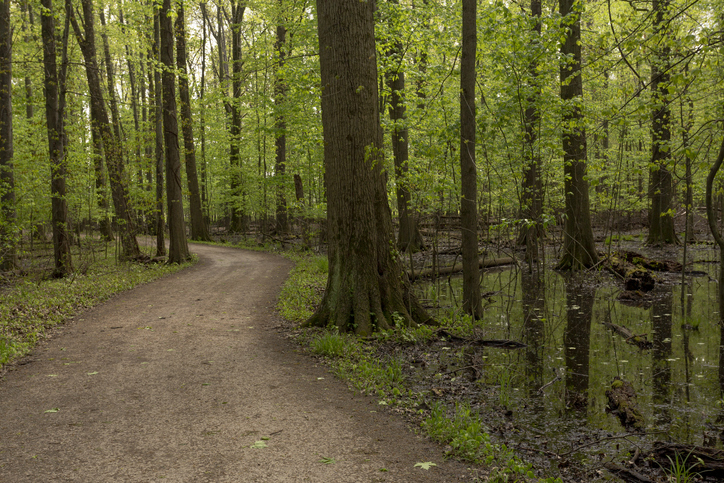Seekonk High School Incorporates Scuba Into Science Curriculum to Make ‘Better Stewards of the Oceans’
November 7, 2022
Quite ironically, many marine scientists never have the opportunity to personally go underwater, even as professionals. Seekonk High School (SHS) in Seekonk, Mass., is one of just a handful of high schools in the entire country to make a scuba experience a regular part of the curriculum — for 16 years and counting.
I just recently had the opportunity to visit SHS, my alma mater (Class of 1997), to participate in the program at the invitation of Matthew Wills. He is the school’s marine science teacher and, as an avid diver himself, initiated the program in collaboration with East Bay Dive Center in Warren, R.I.
In my line of work, as a professional diver and scientist, it’s become increasingly evident that there are innumerable secrets hidden in the ocean’s depths — the challenge is always getting there, and frequently just the motivation to get your feet wet. I was fortunate to learn how to dive while in high school, though Wills’ program was not available at that time. Having such an early jump into the activity opened incredible opportunities for me through college and during the early parts of my career. I was thrilled to have the invitation and learn about the great work being done at SHS.
Seekonk’s Discover SCUBA Diving is a modified introduction to a scuba (self-contained underwater breathing apparatus) diving course designed specifically to mesh well with the marine science curriculum. This year was the first in which the experience was extended to the parents of students to attend and learn with their children.
“We’re fortunate to have to have a community that believes in the importance of this experience and commits the resources to support this endeavor,” Wills said. “The East Bay Dive Center has generously volunteered their time and equipment to the program 18 times in the last 16 years.”
The instructional staff from East Bay further commented, “I believe that if students have these opportunities early in their lives, they will be better stewards of the oceans.”
From my vantage point, indeed they will. The life lessons that diving brings you can only be experienced in one place: underwater. The art and science of diving integrates every important aspect of STEM activities (Science, Technology, Engineering, and Math) with practical applications of physics, physiology, marine science, and even highly relevant recent topics in atmospheric management. While the high school Discover SCUBA experience is only a snapshot, it could be a pivotally important one for these students.
During this one recent program, 24 students were introduced to scuba diving. Many of the students expressed a desire to continue with formal training, and many students talked about how the experience further solidified the desire to become a marine scientist. In many universities with marine programs, dive training is offered, though frequently not easily fit within coursework until junior year. Earlier career training, as part of high school curricula, can help the students better capitalize on underwater research throughout their entire college career. This will inevitably create improved ocean stewardship in our society and culture regardless of the student sticking with diving in any professional capacity after college.
We can’t possibly live on a Blue Planet responsibly, nor think that we can bolster a sustainable “Blue Economy” without a considerable improvement in how everyday life is intertwined with this part of the world. That requires people being there, and that means diving.
My visit to SHS was largely as a passive observer, though I made the effort to introduce some specialized technology to provide some perspective for the students that there are opportunities for lifelong learning and advancement in the field. For example, here in the Ocean State, there are professional divers carrying out underwater tasks every single day — from commercial shellfishing, to waterfront construction and infrastructure projects, to collecting specimens for science, to environmental surveying for offshore wind, to servicing the Newport yachting scene.
I’ve been involved in all of these operations over the years. While working underwater isn’t easy, and isn’t for everyone, those that do it all do it, in part, because they love it. With so very many ocean and environmental issues to contend with, those immersed within it are indeed the planet’s best ambassadors, because you become part of that aquatic environment, and we need a whole lot more of it.
Way to go Seekonk High School!
Michael Lombardi is a career diving contractor engaged in both academic and industrial projects. His Middletown-based business conducts research in advanced diving technology. He has professional affiliations with the University of Arizona and the Marine Technology Society. His work has been funded by the National Geographic Society, and featured on Discovery’s Shark Week, NBC’s Today Show, NOVA, and others. His favorite fish is the mesophptic clingfish bearing his namesake, Derilissus lombardii. He resides in Barrington, R.I. Michael’s work in the community can be found at www.oceanopportunity.com.




Thanks Mike, I couldn’t agree more with this article. Thanks for the numerous times you have returned to SHS to share your expertise, knowledge, and inventions with the students of SHS.